Muse is a powerful, compact electroencephalography (EEG) system. Our industry leading dry electrode technology and ultra-portable design, Muse makes it easy to access and use brainwave data, inside and outside the laboratory and in real-world environments.
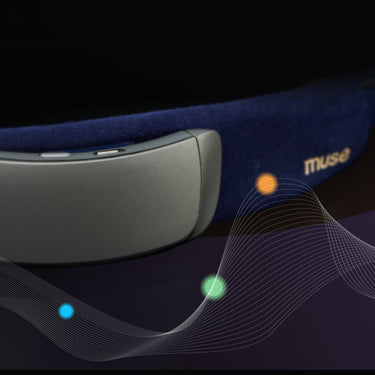
Backed by research from prestigious institutions:
View PressThe Power of EEG Technology
Electroencephalography, or EEG, is a state-of-the-art technology that reads and records the electrical activity within the brain. The result? Wave-like patterns that provide a real-time visual snapshot of the brain at work.
This powerful tool has allowed us to map states of consciousness, study neurological disorders, uncover the mysteries of sleep, and ultimately, advanced our understanding of the brain's intricate workings.
Yet, accessing this tool has historically been costly, complex, and inaccessible outside of clinical settings.
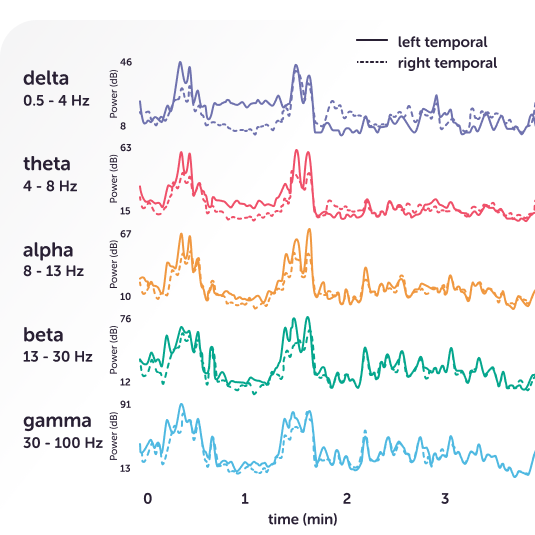
Accuracy at Scale
Today, EEG devices are more portable, user-friendly, and affordable than ever. But how does the accuracy of these devices stack up against the experts?
Muse has earned its place as a trusted technology for neuroscientists, researchers, clinicians, and individuals across the globe.
Stress
Read MoreAnxiety
Read MoreSleep
Read MoreMild cognitive impairment
Read MoreStroke
Read More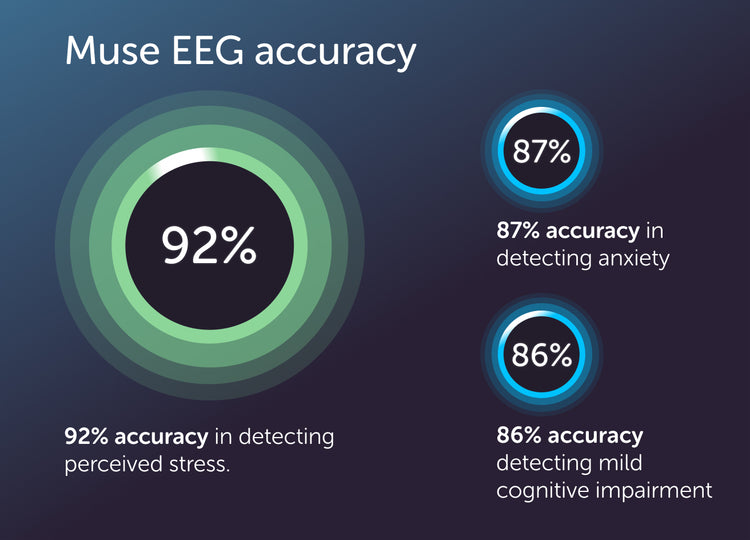
Biofeedback Training Meets Meditation
Biofeedback training, especially when linked with meditation, is an effective method that helps users gain more control over their body’s and brain’s functions and responses.
Here's how it works: Muse gives users real-time audio feedback on their brain activity to reinforce an optimal meditative state. Muse measures the user's brainwave patterns, heart rate, and breathing then gives them real-time audio feedback on their mental state to let them know when they’re in the zone.
Over time, this can improve their ability to focus, reduce stress, and enhance self-awareness.
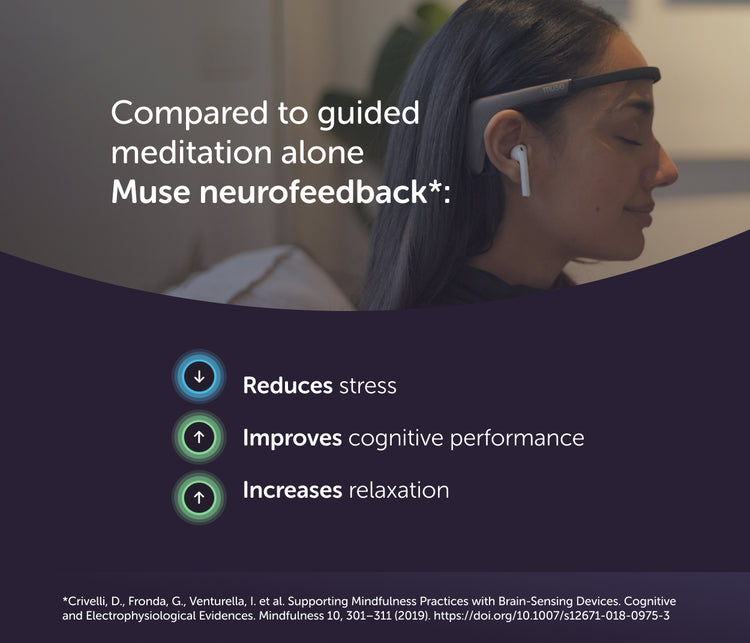
Foundational research
Muse has been instrumental in over 200 peer-reviewed studies with a focus on cognitive performance, attention-deficit hyperactivity disorder (ADHD), anxiety, post-traumatic stress disorder (PTSD), and more.
Here are a few highlighted works:
Stress
PTSD
Cognitive Fatigue / Impairment
Using Muse: Rapid Mobile Assessment of Brain Performance
Classification of Cognitive Fatigue with EEG Signals
Eliciting brain waves of people with cognitive impairment during meditation exercises using portable electroencephalography in a smart-home environment: a pilot study
Supporting Mindfulness Practices with Brain-Sensing Devices. Cognitive and Electrophysiological Evidences
Use of a Wearable EEG Headband as a Meditation Device for Women With Newly Diagnosed Breast Cancer: A Randomized Controlled Trial
Classification of Cognitive Fatigue with EEG Signals
Screening for Mild Cognitive Impairment with Speech Interaction Based on Virtual Reality and Wearable Devices
Other Medical Applications
Technology supported mindfulness for obsessive compulsive disorder: Self-reported mindfulness and EEG correlates of mind wandering
Predicting stroke severity with a 3-min recording from the Muse portable EEG system for rapid diagnosis of stroke
Application of the Muse portable EEG system to aid in rapid diagnosis of stroke
Stroke identification using a portable EEG device – A pilot study
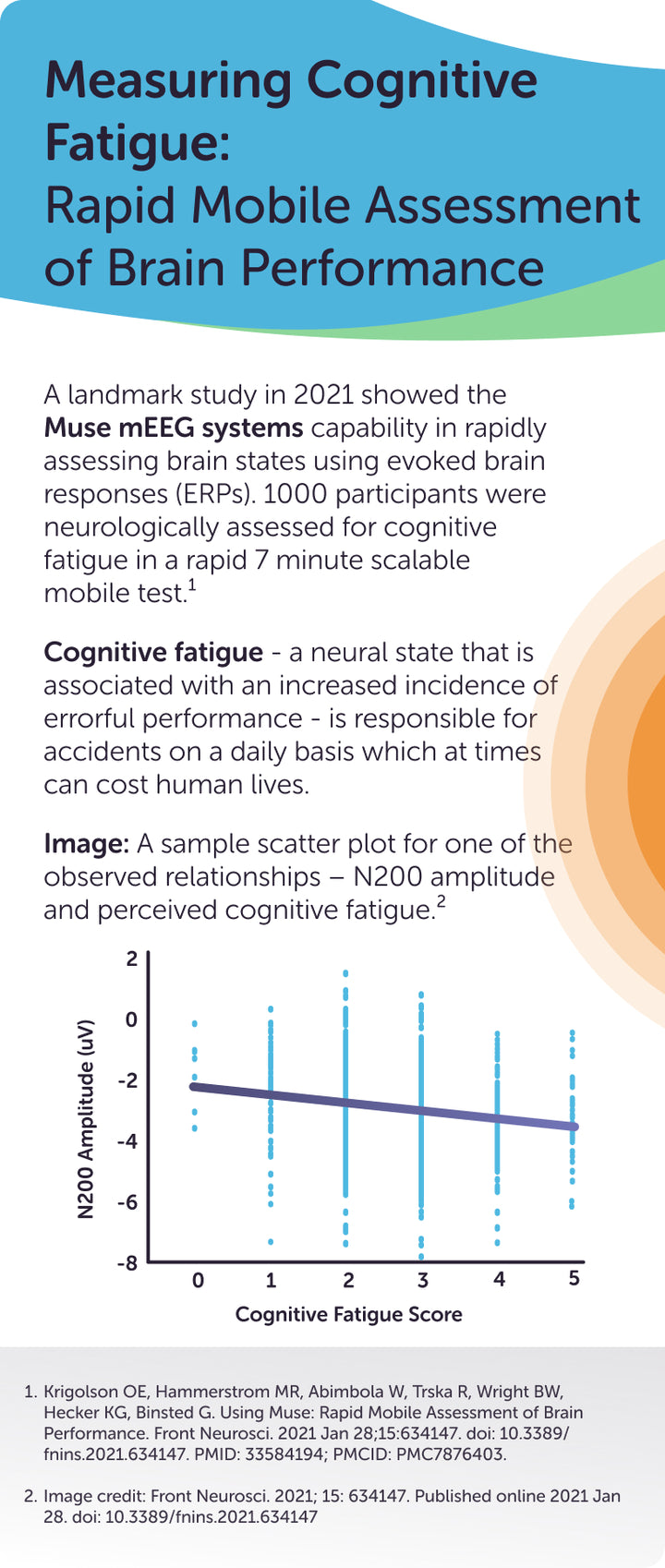
How does Muse compare against other wrist wearables and fitness trackers?
Sleep
While wrist wearables and fitness trackers can give you a pretty good guess on how long you’re spending in each sleep stage, measuring brain activity is the only way to truly understand your sleep patterns.
- Precision Empowered: While many devices gauge sleep stages using movement and heart rate, Muse brings precision to the forefront with EEG measurements. We tap directly into the source - your brainwaves - the gold standard for discerning sleep stages.
- Deep-Dive Insights: Rather than offering a surface-level sleep overview, Muse delves deeper. While others count the minutes you spend in light, deep, and REM sleep, Muse uncovers the 'when' and 'how'. When is your deep sleep most restorative? How does your sleep position affect awakenings? With Muse, you explore the facets of your sleep that truly matter.
- True Sleep Perception: Other devices may trip over periods of stillness or calm heart rate, interpreting them as sleep. Imagine this: you're engrossed in a late-night novel, motionless. Such devices might consider you fast asleep. However, Muse’s EEG technology sees beyond the surface, recognizing your wakeful reading. Equally, Muse intelligently interprets a sudden heart rate spike, distinguishing the excitement of a vivid dream from a midnight water expedition.
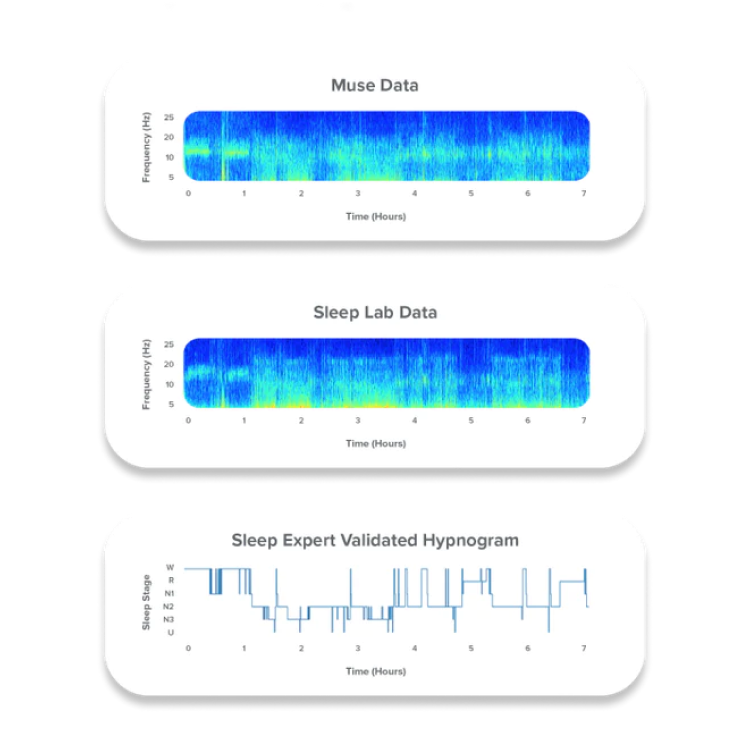
Meditation
Why EEG Brain Data Matters in Meditation
- Pinpoint Accuracy: Our EEG technology taps into the source - your brainwaves - for a precise insight into your meditation states, far surpassing the guesswork of heart rate proxies and other meditation apps.
- Instantaneous Guidance: With Muse's real-time biofeedback, you can tweak your meditation techniques on-the-go, making every session more effective.
- Deep Dive into Your Mind: Get an in-depth look at your meditation state, measuring not just the length but the quality of your practice.
- Personalized Path: Our real-time biofeedback tailors advice to you, supporting a unique, personalized meditation journey that suits your rhythm.
- Track Your Progress: See how far you've come! Our EEG data tracking over time allows you to visualize your growth, serving as a motivating pat on the back.
- Tame the Wandering Mind: Our technology helps you recognize and reduce mind-wandering, a common obstacle on the road to meditation mastery.
- Trust the Science: Backed by scientific research, Muse's use of EEG data for meditation monitoring instills confidence in your progress and results.
- Interactive Experience: EEG data combined with real-time biofeedback provides an immersive, responsive meditation experience, making your sessions both enjoyable and beneficial.
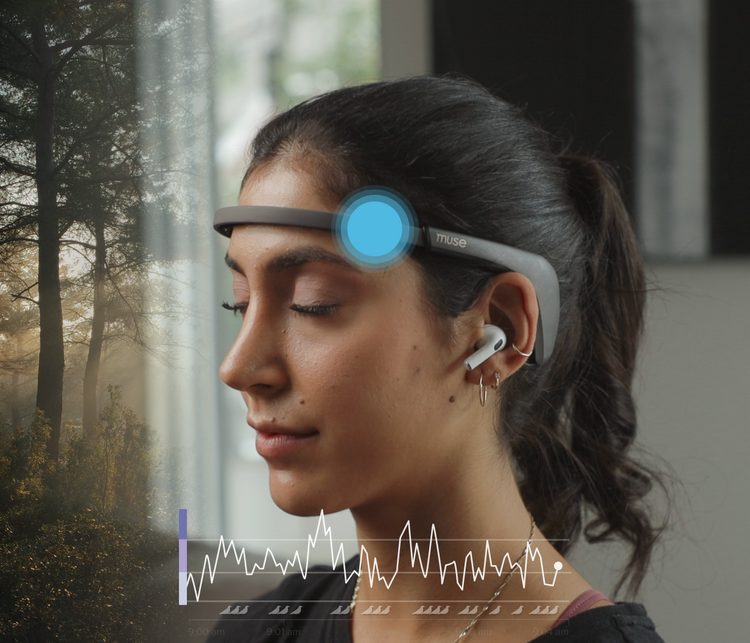
Research Resource Identifier (RRID)
If you’re publishing research papers with Muse, make them more easily identifiable to other scientists through the Research Resource Identifier (RRID) initiative. Don’t forget to insert Muse’s unique identifier in your paper’s methods section when you first mention Muse, like this:
Muse (SCR_014418).
